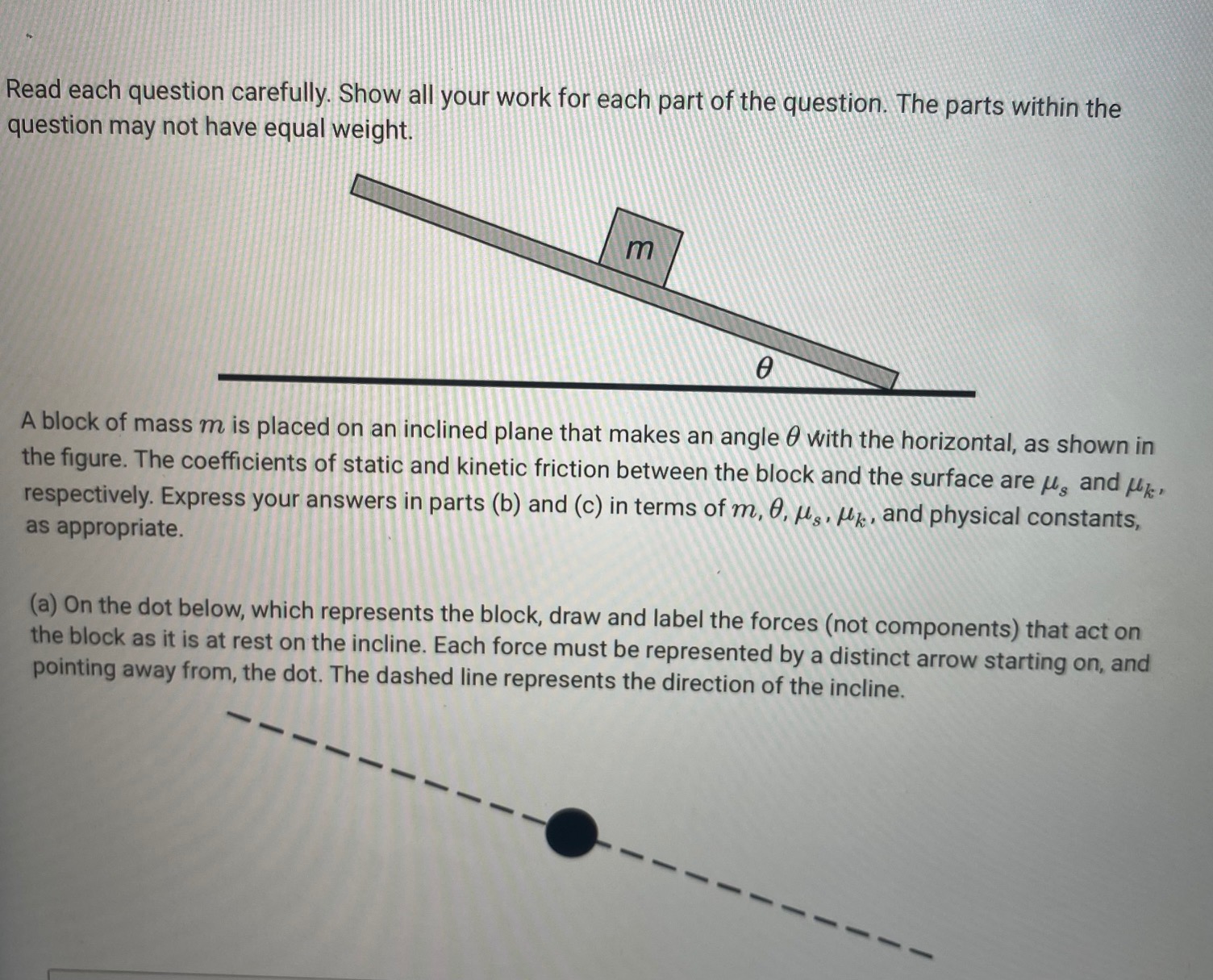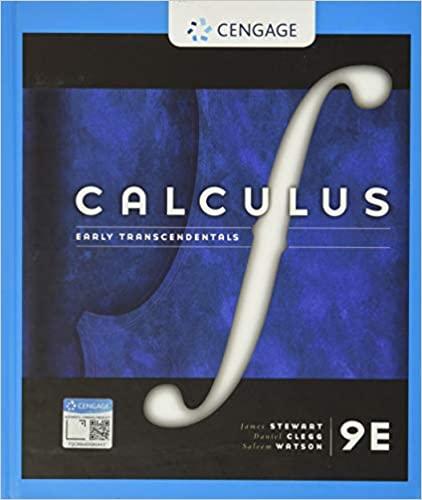Answered step by step
Verified Expert Solution
Question
1 Approved Answer
Read each question carefully. Show all your work for each part of the question. The parts within the question may not have equal weight.






Read each question carefully. Show all your work for each part of the question. The parts within the question may not have equal weight. m A block of mass m is placed on an inclined plane that makes an angle with the horizontal, as shown in the figure. The coefficients of static and kinetic friction between the block and the surface are , and k, respectively. Express your answers in parts (b) and (c) in terms of m, 0, s, M, and physical constants, as appropriate. (a) On the dot below, which represents the block, draw and label the forces (not components) that act on the block as it is at rest on the incline. Each force must be represented by a distinct arrow starting on, and pointing away from, the dot. The dashed line represents the direction of the incline. Assume the value of is greater than the value from part (b). (c) Derive an expression for the acceleration of the block. 5/10000 Word Limit (b) Derive an expression for the maximum value of O for which the block will not slide down the incline. ii. If the block is sliding down the incline, does the force of friction acting on the block increase, decrease, or remain the same? Increase Justify your answer. Decrease Remain the same It is determined that for this surface, the force of friction is proportional to the speed of the block according to the equation f = -kv, where k is a positive constant. (e) On the axes below, sketch the speed v and the acceleration a as functions of time as the block slides down the incline. (d) The incline is set with the angle 0. The angle is slowly increased until the block begins to slide down the incline. After the block begins to slide, the angle is kept constant. i. Until the block begins to slide, does the force of friction acting on the block increase, decrease, or remain the same as the angle increases? Increase Justify your answer. Decrease Remain the same Q ?
Step by Step Solution
There are 3 Steps involved in it
Step: 1

Get Instant Access to Expert-Tailored Solutions
See step-by-step solutions with expert insights and AI powered tools for academic success
Step: 2

Step: 3

Ace Your Homework with AI
Get the answers you need in no time with our AI-driven, step-by-step assistance
Get Started


